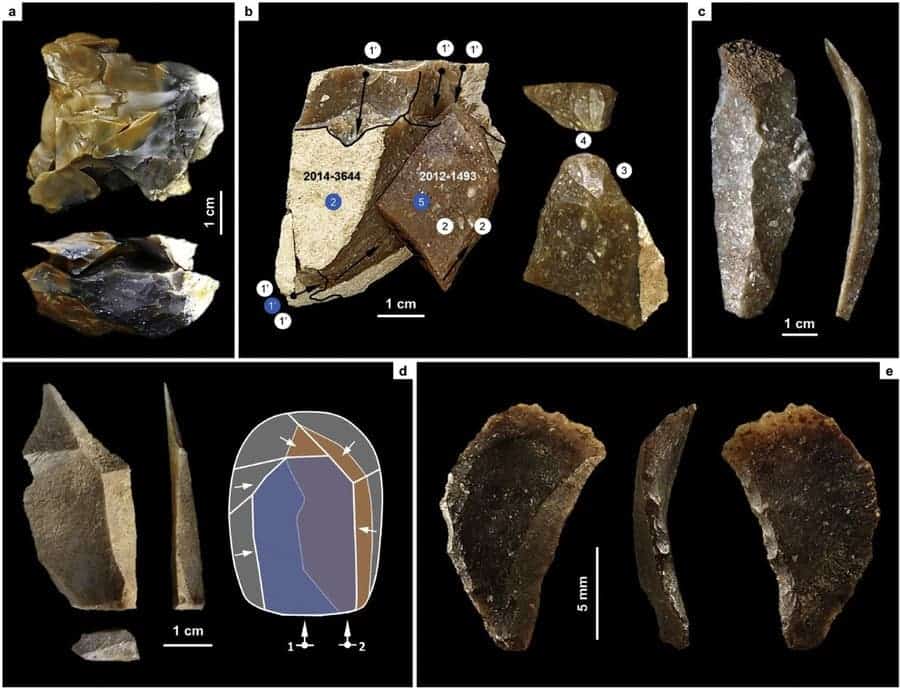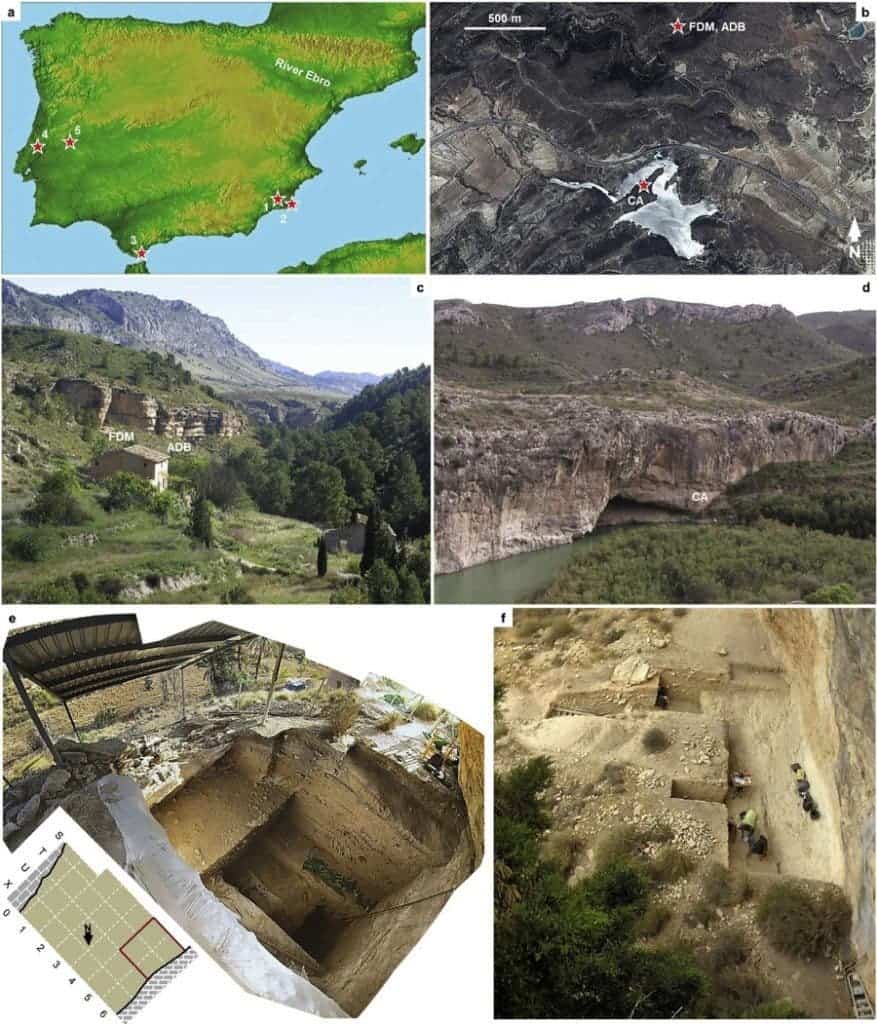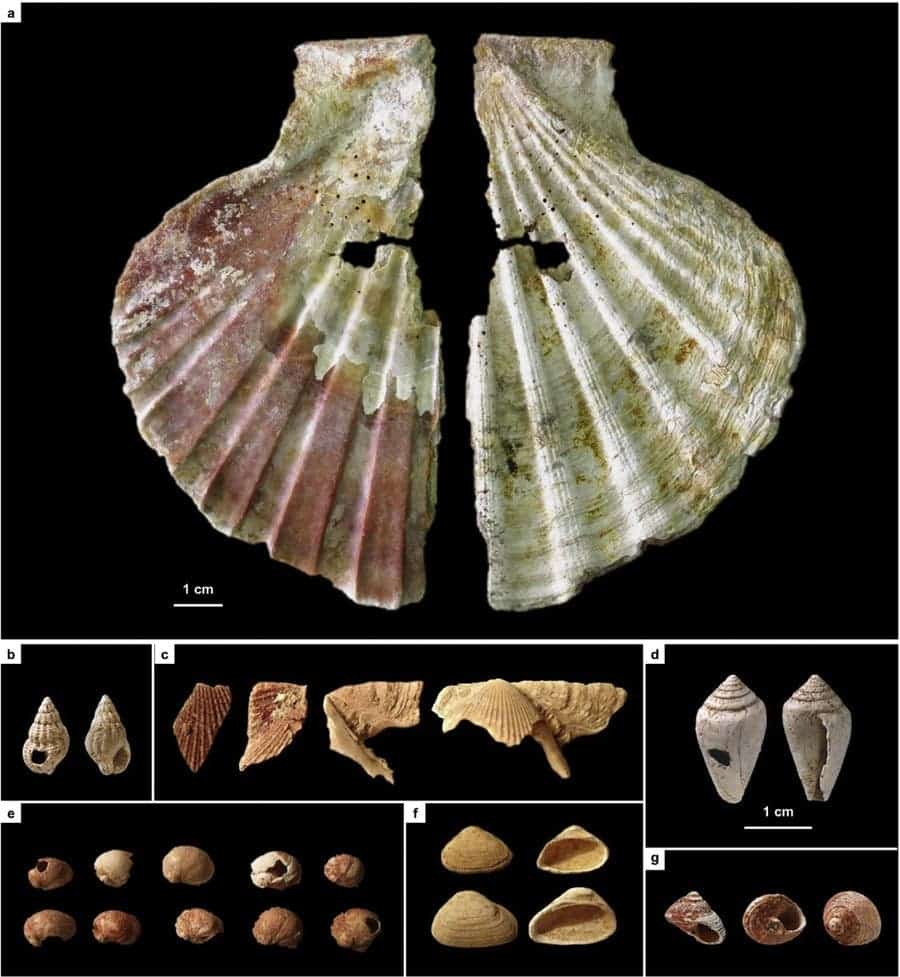Neanderthals in Spain lived on for at least 3,000 years after their relatives had died out everywhere else, new research found. The work suggests that human evolution wasn’t a continuous, streamlined process — rather, a “stop-and-go, punctuated, geographically uneven” one.

Image credits Zilhão J. et al., 2017, Heliyon.
The researchers, composed of members from Portugal, Spain, Germany, Austria, and Italy, say their findings point to an alternating and uneven history of human evolution. The team spent over ten years in the field, excavating three new Neanderthal sites in southern Spain, where they discovered evidence of “distinctly Neanderthal materials” dating roughly 37,000 years ago.
Ok, so what?
It’s a thrilling discovery since that’s thousands of years later than the last signs we’ve found of Neanderthals anywhere in western Europe.
“Technology from the Middle Paleolithic in Europe is exclusively associated with the Neanderthals,” said lead author Dr. João Zilhão, from the University of Barcelona. “Even in the adjacent regions of northern Spain and southern France the latest Neanderthal sites are all significantly older.”
The Middle Paleolithic is a sub-division of the stone age, spanning from 300,000 to about 30,000 years ago. This is about the time when anatomically modern humans started migrating out of Africa and integrating with other human species already inhabiting Eurasia — including the Neanderthals.
The process was widely believed to be a continuous process — our ancestors would move in and the locals would be thrilled and start to date them, then some would move on and so on. According to Zilhão’s team, however, this wasn’t the case. Interbreeding was a much more punctual affair, with different evolutionary patterns in different geographical regions.
The paper draws on evidence recovered from three sites across the Mula basin, Spain: Cueva Antón, a cave located in the Mula River valley, as well as Finca Doña Martina and Abrigo de La Boja, two rock-shelters located in the Rambla Perea. The artifacts include stone tools and evidence of their production and use, such as stone cores, stone flakes, débitage (waste from stone tools manufacturing), as well as charcoal. The items were dating using radiocarbon and stratigraphy methods (where possible), revealing that Neanderthals inhabited the region, and overwhelmingly likely all of modern-day Spain, until approximately 37,000 years ago.

Image credits Zilhão J. et al., 2017, Heliyon.
The river Ebro likely played a part in keeping Iberian populations isolated from encroaching humans. The explosion of the Phlegraean Fields caldera some 39,850 years ago, with the “population sink it generated in Central and Eastern Europe” and the climatic changes it induced, would have increased the biogeographical divide represented by the river, further stalling the Neandertal/modern human admixture front.
Cueva Antón, they add, is the most recent known site inhabited by Neanderthals in Europe.
The findings showcase the step-by-step process through which anatomically modern humans and preexisting human populations interbred and assimilated throughout Europe — and likey everywhere else, too.
“We believe that the stop-and-go, punctuated, uneven mechanism we propose must have been the rule in human evolution, which helps explaining why Paleolithic material culture tends to form patterns of geographically extensive similarity while Paleolithic genomes tend to show complex ancestry patchworks,” Dr. Zilhão adds.

Image credits Zilhão J. et al., 2017, Heliyon.
They are also important in the wider context of stone-age archaeological findings in the Iberian Peninsula:
“A corollary of these findings,” the team writes, “carries implications for the authorship of all other aspects of these regions’ archeological record. For instance, given their dating and archeological associations, there can be no question that the painted/perforated shells from Cueva Antón and Cueva de los Aviones, as well as the abstract engraving and ornamental use of raptor feathers documented at Gorham’s Cave, stand for manifestations of Neandertal symbolism.”
He explains that there is still a lot we don’t know about human evolution, the Neanderthals in particular. Most of what we do know comes from populations in France, Germany, and central Europe, but Zilhão comments that during the Ice Age these were “peripheral areas.” It’s likely that over half of the Europeans who lived during the Paleolithic were Iberians, he adds, meaning we’re missing a big chunk of the picture here. An image that ongoing research is trying to piece together, but one that will require ” discovering and analyzing new sites, not in revisiting old ones,” Dr. Zilhão believes.
The paper “Precise dating of the Middle-to-Upper Paleolithic transition in Murcia (Spain) supports late Neandertal persistence in Iberia” has been published in the journal Heliyon.


